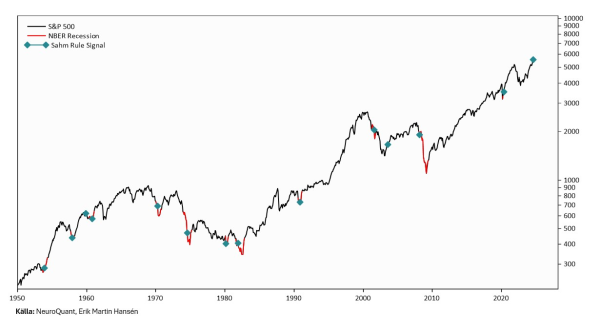Avoid the noise on social media

Never before has so much information been available to investors. Despite the availability of information, data and powerful applications, it takes knowledge and experience to filter the noise.
On social media, many people chase engagement and followers by posting “interesting” graphs. Most of these graphs hurt more than they help.
A graph that has trended strongly in recent weeks on #finanstwitter is Sahm Rule.
This signal in the US labor market should be a surefire sign of economic recession. Most recession “signals” have good potential to create engagement.
The problem with these macro signals is:
- Selection bias (why have you chosen to focus on this particular signal?)
- Small sample size (most of these macro signals have small sample size)
The biggest problem with the Sahm Rule is that it has been a bad sell signal for the stock market. The idea is that it should be a negative signal when in fact it has often been a good bottom signal for the stock market.
If we study the graph below, we see that the Sahm Rule was a reliable bottom signal in 1953, 1957, and 1960. The signal also worked poorly in the 1970s and at the bottom in 2020.
Many who refer to the Sahm Rule may not have access to data from the 1950s, or the bad periods are excluded to better fit a narrative.
What has worked better than the Sahm Rule is a simple trend-following strategy where we stay outside the S&P 500 when the index has traded below its 200-day average. However, it is not something that creates engagement on social media.
In conclusion, we should be mindful of what is posted on social media. There is a lot that we can throw in the trash.
I will return with more examples.
Kind regards,
Erik Martin Hansen


